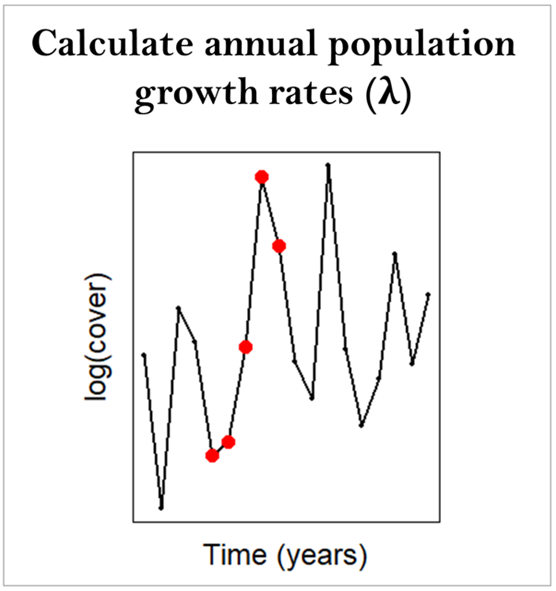Hailey Mount discusses her recent article: ‘Drought tolerant grassland species are generally more resistant to competition.’
Background
The success of the different plants in a community depends both on the available resources and the intensity of local competition for those resources. To conserve and restore plant communities in the face of our changing climate, we need a clearer understanding of how environmental conditions shape these biotic interactions. However, plant strategy theories disagree about how interactions between traits and the environment at the population level may structure communities, particularly in water-limited systems.
Physiological trade-offs require species to either invest in tolerating low-resource availability or in taking advantage of resources quickly. In one view (formalized by Philip Grime), stress-tolerant species are pitted against competitive species. So, in an arid system we might expect the species that do well during drought years to perform poorly during wet years.
An alternative view (formalized by David Tilman) proposes that stress-tolerant species are more competitive because of their greater ability to persist at low resource levels. Therefore, we might expect the dominant species in a water limited ecosystem to persist under drought and also have high fitness in a dense community because of their enhanced ability to compete for the limiting resource – water.
Given these contrasting expectations, we wanted to know if selection for traits to cope with water limitation prevents grassland species from having high fitness in more productive conditions, or if conservative traits confer both drought tolerance and resistance to neighbor competition.
The study
The Central Plains and Southwestern United States provided an excellent system to test for this relationship within and between grasslands that span a broad precipitation gradient. We used five-years of plant cover estimates for 82 species from six different grasslands monitored in the Extreme Drought in Grasslands Experiment (EDGE).
We estimated low-density growth rates for each population in drought conditions without neighbors and in ambient conditions with mean neighbor abundance. We compared these two measures of fitness to investigate the relationship between drought tolerance and resistance to competition within and between grassland types. Lastly, we tested if functional traits could help explain this relationship.
Results and significance

Our results suggest that the plant populations maintaining high growth rates in drought also maintain high growth rates with increased neighbor competition. This agrees with the second view that – in grasslands – selection for drought tolerance also makes species better at resisting competition. However, this coordination is weakest in the driest grasslands, potentially because there is reduced selection for aboveground competition in these environments.
We found that two traits related to investment in drought tolerant structures, low leaf dry matter content and low (more negative) leaf turgor loss point, were correlated with plant populations that did well in drought and with neighbor competition. This highlights the strong selective pressure that water-limitation has on these systems and agrees with other studies that have previously pinpointed these two traits as important measures for fitness in grasslands.

By providing a framework for understanding how drought and neighbor abundance jointly structure grassland communities, we can better anticipate how these systems may be affected by extreme drought events. Establishing which traits confer higher fitness in grassland systems may help predict which populations will establish and persist given the local water availability and neighbor cover, which can guide conservation and restoration efforts in this region. Broadly, these findings enhance our understanding of how population fitness is related to both abiotic and biotic drivers and can improve our ability to predict community assembly in a rapidly changing world.
